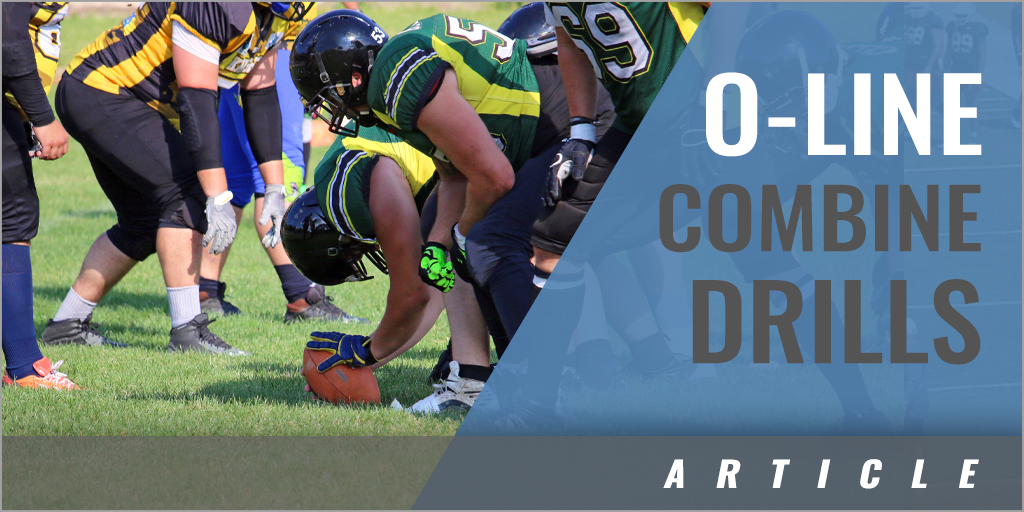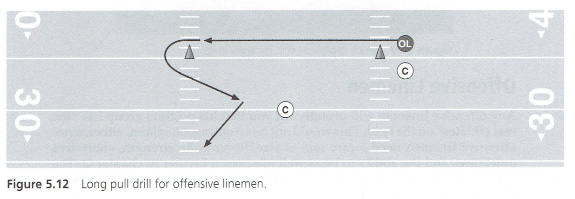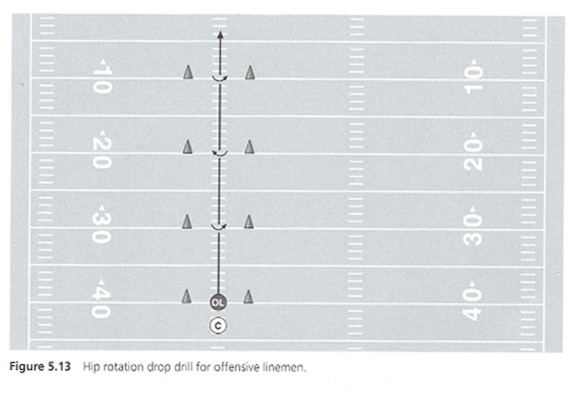|
By: Loren Landow & Chris Jarmon Originally Published in: All-Pro Performance Training Provided by: Human Kinetics Any offensive lineman will proudly tell you that his position group has "the real athletes" on the field. This would not be an outrageous claim, either, since offensive linemen need a rare mix of size, lower-body strength, short-area quickness, and the ability to bend well. The combine drills for this group are designed to test all these skills along with position-specific footwork. PASS PROTECTION MIRROR DRILL The pass protection mirror drill (figure 5.11) is a great change-of-direction drill that emphasizes bend and short-area quickness as well as position-specific footwork and reactive capabilities. The offensive lineman starts in his stance at the line of scrimmage, with a standing player across from him serving as the rabbit or mirror. At the coach's signal, the offensive lineman pops up into his pass protection footwork and takes lateral steps while trying to keep the mirror player directly in front of him. The mirror player runs back and forth to try to shake the offensive lineman. Each repetition lasts for approximately 16 seconds. The drill can indicate a lineman's ability to maintain bend throughout changes of direction.
LONG PULL Offensive linemen who can pull and quickly get out in space to make blocks are highly valuable, especially as football continues to evolve and get faster. Although pulling in football is limited to guards and tackles, the long pull drill (figure 5.12) can also indicate a center's athleticism. The lineman begins in his football three-point stance at one hash mark, facing downfield. The coach directly across from him signals for the lineman to immediately pull back out of his stance and sprint down the line of scrimmage toward the other hash, rounding a cone placed at that hash to turn upfield. As he turns upfield, the lineman angles back inside the hash toward a coach placed directly between the hashes. This coach gives the player a signal to cut back outside toward the hash again and finish the drill sprinting.
HIP ROTATION DROP Evaluators at the college and pro levels want to know what an offensive lineman's hip fluidity looks like and how his hips move in the transverse plane. For the hip rotation drop (figure 5.13), a 10-yard-wide lane is marked off with two parallel rows of four cones. Cones in each row are placed 10 yards apart, forming a 30-yard-long lane. The lineman begins the drill at the start of the lane facing backward toward a coach and starts chopping his feet in place. The coach points a football in one direction, and the lineman swivels his hips that way and begins to shuffle down the lane while keeping his eyes fixed on the coach. At the first 10-yard interval, the coach points the other way, and the lineman flips his hips all the way across, still shuffling but now leading with the opposite foot. He is commanded to swivel his hips three times. To finish the drill, the coach cues the lineman to turn another 90 degrees and begin sprinting downfield in the direction he has just been shuffling.
|









